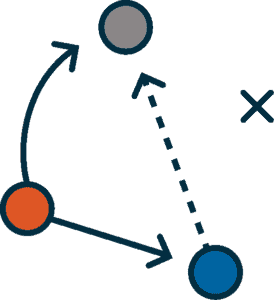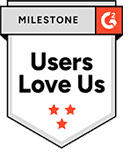
New lease accounting standards are sweeping the industry, bringing about significant change and challenges for entities of all sizes and industries. For most companies, the changes take effect beginning in 2019, but some entities, like private companies, have an extra year. The long-term impact of the new standards has yet to be seen, but the implementation issues facing many entities have become increasingly evident.
The modifications may be significant but are far from new. The Financial Accounting Standards Board and the International Accounting Standards Board issued in 2016 the ASC 842 and IFRS 16, respectively. The standards bring many leases onto the balance sheet, increasing the visibility of a company’s assets and liabilities.
In fact, listed companies using IFRS Standards or US GAAP are estimated to have around $3.3 trillion of lease commitments, of which more than 85 percent do not appear on their balance sheets. Why? Historically, leases have been categorized as either “finance leases” (reported on the balance sheet) or “operating leases” (disclosed only in the notes to the financial statements)1.
“When the new FASB and IASB leases standards take effect, they’ll provide investors across the globe with more transparent, comparable information about lease obligations held by companies and other organizations,” stated FASB Chair Russell G. Golden in announcing the new standards2.
With the first wave of businesses transitioning to the new lease accounting standards beginning January 1, 2019, many entities have been busy developing plans for ASC 842 and IFRS 16. Other entities, like private companies, have an extra year to adopt ASC 842. IFRS 16 will be effective for annual periods beginning on or after Jan. 1, 2019. For those businesses that have yet to implement the new standards, understanding the lessons learned will prove essential.
This white paper will explore some of the key differences between ASC 842 and IFRS 16 and will provide actionable insights and lessons learned to help businesses navigate the complexities and ensure a successful adoption.
Notable Differences
 While ASC 842 and IFRS 16 converge in many ways, they do diverge in several critical areas. Here’s a sampling of some key points of differentiation.
While ASC 842 and IFRS 16 converge in many ways, they do diverge in several critical areas. Here’s a sampling of some key points of differentiation.
Low value leases: One notable difference is that IFRS 16, which replaces accounting requirements (IAS 17 Leases) introduced more than 30 years ago, does not require a company to capitalize leases of “low-value assets” (assets less than or equal to $5,000). ASC 842 does not include this exemption. Among assets commonly leased, office furniture,personal computers and mobile phones are typically expected to qualify as “low-value assets,” according to the IASB. This is in addition to an exemption on short-term leases (less than 12 months), which is also offered under ASC 842.
Lease classification: Unlike ASC 842, which has a dual model approach, IFRS 16 requires a single model approach. It removes the classification of leases as either operating leases or finance leases, treating all leases as finance leases. As noted by KPMG, this will mean that dual reporters must separately track leases that have a different classification between US GAAP and IFRS because the accounting will be different3.
Transition approach: When adopting IFRS 16, companies can choose between taking a retrospective approach or a modified retrospective approach. Meanwhile, FASB issued
in July 2018 an amendment that created an additional (and optional) transition method in an effort to reduce costs and ease implementation for financial statement preparers. Specifically, the ASU provides: 1) An option to apply the transition provisions of the new standard at its adoption date instead of at the earliest comparative period presented in its financial statements; and 2) A practical expedient that permits lessors to not separate non-lease components from the associated lease component if certain conditions are met4.
Lessons Learned
Preparing for the implementation of any new accounting standard can be a significant undertaking but, with the proper planning, companies can alleviate some of the headaches. To help ensure a smooth transition, consider these lessons learned:
 Act early: When undertaking a large project, such as collecting, extracting and entering leases, it’s important to have a clear understanding of the desired output. This requires an early evaluation and selection of a system, which will give you a clearer idea of which data points you can track, how your journal entries will look, and what GL/AP integrations you need to consider. Before you do anything, look at your leases. Read five, 10 or 20 of them and, if necessary, have someone who is familiar with the leases explain them to you. Eventually, when you have questions about systems or ASC 842 technical considerations, you will understand them in the context of your portfolio.
Act early: When undertaking a large project, such as collecting, extracting and entering leases, it’s important to have a clear understanding of the desired output. This requires an early evaluation and selection of a system, which will give you a clearer idea of which data points you can track, how your journal entries will look, and what GL/AP integrations you need to consider. Before you do anything, look at your leases. Read five, 10 or 20 of them and, if necessary, have someone who is familiar with the leases explain them to you. Eventually, when you have questions about systems or ASC 842 technical considerations, you will understand them in the context of your portfolio.
Educate: Staff education and training is essential. Ensure that your associates have reviewed the new standards and understand the implications. It is also important to stay abreast of any potential changes in interpretation that may arise going forward. While many leases are straightforward (tenant-based real estate leases, fixed expense equipment leases, etc.), it’s important to know your business model and recognize if there are any unique lease types (embedded, variable rent, index-based, multiple-asset agreements, etc.).
Leverage technology: Technology should not be thought of as strictly a compliance solution. Purchasing technology presents a significant opportunity to find enterprise value in your solution. What if you could centralize your real estate leases and track non-financial components? What if you could use reporting and analytics to uncover risk, or synergy, across your portfolio? What if you could leverage a solution to centralize all contracts, not just leases? Leveraging a robust end-to-end lease management and accounting software solution, that also helps ensure ASC 842 and IFRS 16 compliance, is essential.
Have a Plan: Break the implementation down into phases and create a cross-functional team to spearhead the project. Ensure the plan clearly outlines the roles, responsibilities and timelines. Have a plan for including people outside of accounting (i.e. real estate people who would actually have the lease and people who are in charge of office equipment leases such as copiers and furniture). Also, consider working backward and think about Day 2 first. Why? It’s easy to have a plan for Day 1, but what about next year? What about when you expand, make an acquisition, or hire new associates? Extend your focus beyond Day 1 compliance to sustainable Day 2 compliance. What will be the new process internally? (i.e., entering, approving a lease, recording journal entries, passing an audit, etc.) What other value can you uncover from this exercise? What are some sample leases? (Have a real estate, asset manager or legal expert explain them to you, if necessary). Then, start collecting.
Communicate: Clarity and communication is essential. Communicate the impact of the new standards to all stakeholders, including those outside of the corporate accounting department. This includes such groups as real estate and IT. They too will be impacted and need to understand the changes.
Conclusion
Don’t delay. Begin your implementation and decision-making process today. Preparing for the new accounting standards may seem daunting but you’re not alone. Turn to experts like lease accounting and management software professionals Visual Lease, who can help you navigate the complexities and set you on reliable path to ASC 842 and IFRS 16 lease accounting compliance.
About Visual Lease
Visual Lease is a leading provider of lease accounting and lease administration software. Our software will help get your organization compliant with ASC 842 and IFRS 16 requirements. The Visual Lease platform also provides and easy-to-use Day 2 solution with its lease management capabilities and infrastructure. The system enables organizations to quickly and easily manage their lease portfolios, define and track specific lease clauses, proactively manage critical dates (such as renewal options), and visualize your asset portfolio! Request a demo of Visual Lease today
1 “IASB Shines Light on Leases by Bringing Them onto the Balance Sheet.” IASB, 13 Jan. 2016, archive.ifrs.org/Alerts/PressRelease/Pages/IASB-shines-light-on-leasesby-bringing-them-onto-the-balance-sheet.aspx
2 “FASB Issues New Guidance on Lease Accounting.” FASB, 25 Feb. 2016, www.fasb.org/cs/ContentServer?c=FASBContent_C&cid=1176167901466&d=&pagename=FASB/FASBContent_C/NewsPage
3 “Leases: Top Differences between IFRS 16 and ASC 842.” KPMG LLP, advisory.kpmg.us/articles/2018/ifrs-16-asc-842-differences.html
4 “FASB Issues Targeted Improvements to Leases Standard.” FASB, 30 July 2018, www.fasb.org/cs/ContentServer?c=FASBContent_C&cid=1176170985150&d=Touch&pagename=FASB/FASBContent_C/ NewsPage























